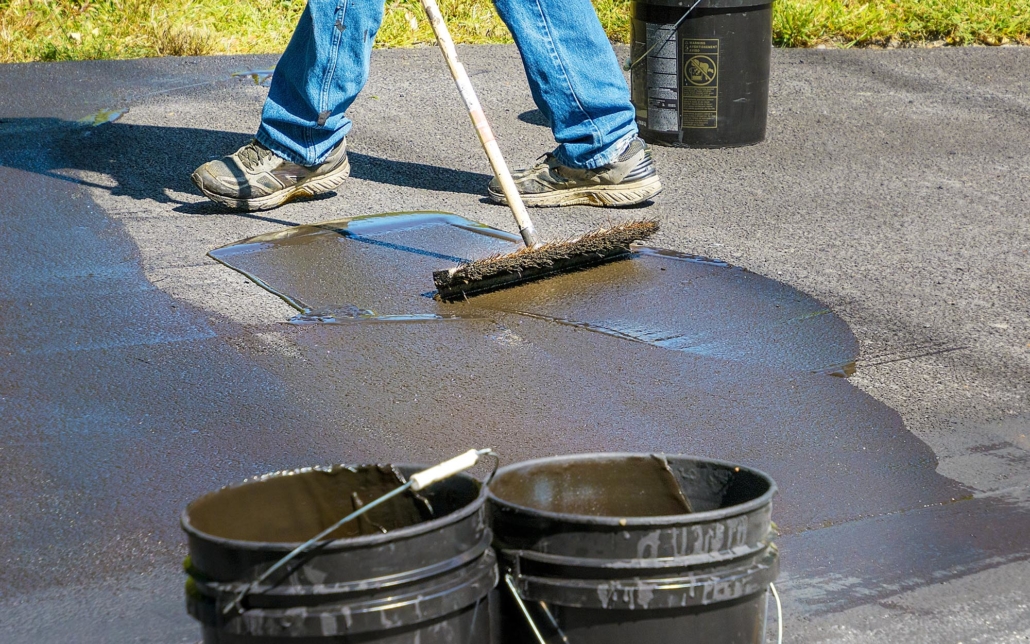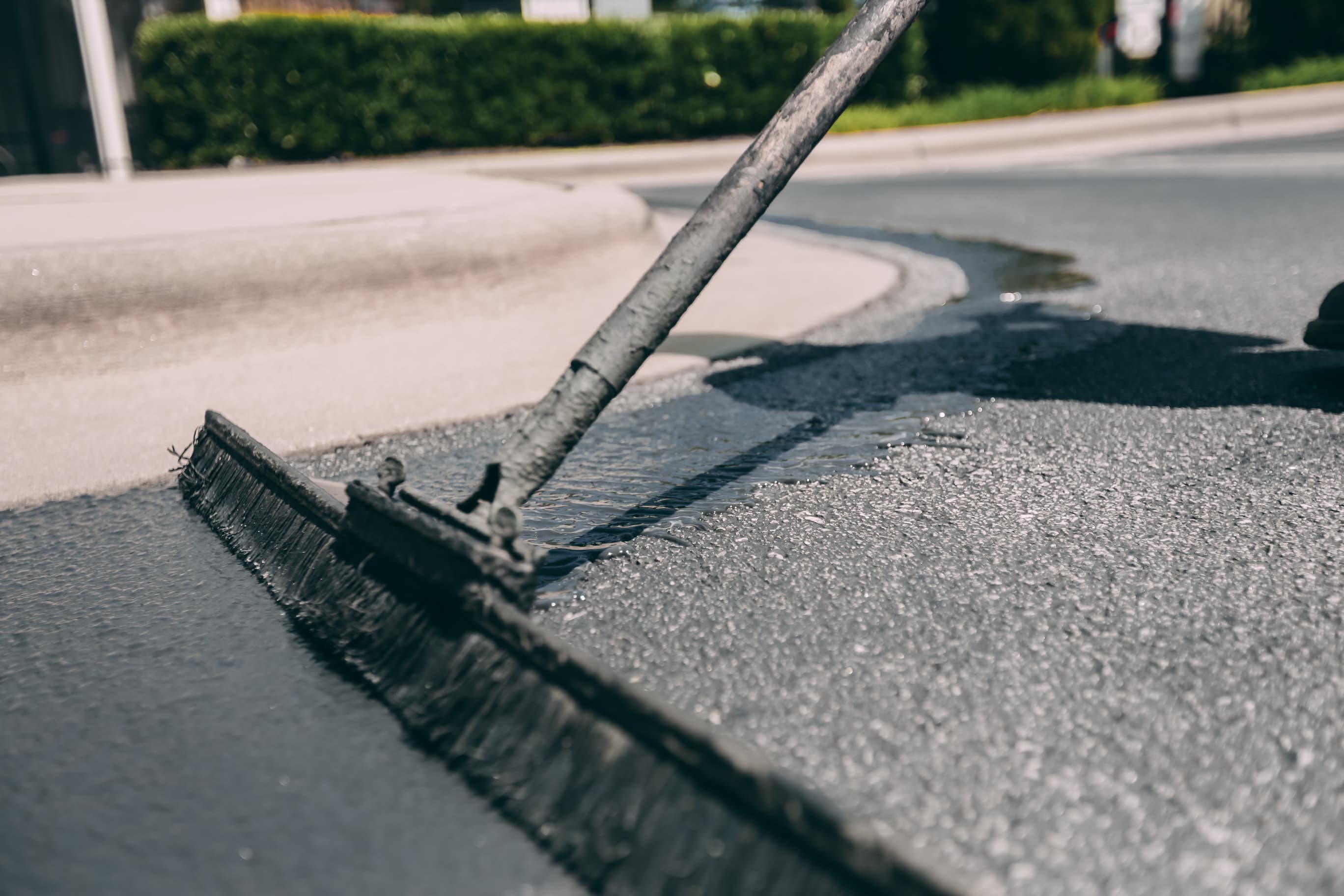Unleash the Prospective: Regrading and Asphalt Sealing for Business Areas
Unleash the Prospective: Regrading and Asphalt Sealing for Business Areas
Blog Article
Warm Mix Asphalt: A Lasting Solution for Sidewalk
Warm Mix Asphalt (HMA) has arised as a leading lasting choice for pavement remedies, providing a myriad of ecological benefits and cutting-edge innovations. As the need for environmentally friendly building and construction methods grows, exploring the subtleties of HMA's sustainability can give beneficial understandings right into the future of pavement options.
Ecological Advantages of Hot Mix Asphalt

Furthermore, Hot Mix Asphalt aids to alleviate metropolitan heat island effects. Its dark color soaks up sunshine, lowering the quantity of warm showed back into the ambience contrasted to lighter-colored sidewalks. This can lower ambient temperatures in urban areas, lowering the demand for cooling and ultimately decreasing energy usage.
On top of that, Warm Mix Asphalt adds to improved stormwater monitoring. Its porous nature allows water to penetrate the sidewalk and reenergize groundwater supplies, lowering drainage and the threat of flooding. These ecological advantages make Warm Mix Asphalt a lasting selection for paving freeways and roads.
Energy Efficiency in HMA Production
Is energy efficiency a critical element in the manufacturing of Warm Mix Asphalt (HMA)? Energy plays a significant function in the production of HMA, influencing both expense and ecological sustainability. One essential element of power effectiveness in HMA production is the usage of warm mix asphalt (WMA) modern technologies.
Furthermore, improvements in plant modern technologies have led to even more energy-efficient HMA manufacturing procedures. By enhancing energy usage in HMA manufacturing, the sector can decrease its carbon footprint while keeping premium pavement products.
Recyclability of Warm Mix Asphalt
The recyclability of Warm Mix Asphalt (HMA) is a pivotal facet of its sustainability and long-term ecological impact. HMA is just one of one of the most recycled products in the USA, with over 100 million lots of reclaimed asphalt pavement (RAP) being reused annually in new sidewalk building. Recycling HMA offers several ecological benefits, such as lowering the demand for virgin products, lowering energy consumption during manufacturing, and decreasing the quantity of waste sent out to garbage dumps.
The procedure of recycling HMA includes crushing the existing sidewalk, crushing it right into smaller items, and mixing it with new aggregate and asphalt binder to produce a recycled mix. This recycled mix can often carry out in web link addition to or also better than conventional HMA, while needing less resources and producing reduced greenhouse gas emissions. By incorporating RAP right into brand-new sidewalk jobs, roadway firms can preserve all-natural sources, reduce expenses, and minimize the ecological footprint of roadway construction and upkeep tasks. In general, the recyclability of HMA plays a significant role in advertising lasting techniques within the sidewalk industry.

Long-Term Efficiency of HMA
Asphalt pavements demonstrate durability and resilience over an extended period, showing the lasting efficiency of Hot Mix Asphalt (HMA) The durability of HMA can be credited to its capability to endure hefty web traffic loads, severe climate condition, and the effects of aging. Studies have shown that properly designed and correctly built HMA sidewalks can last for twenty years or more with routine maintenance. The trick to maximizing the long-term efficiency of HMA hinges on making use of top notch materials, adhering to finest practices in construction, and applying effective upkeep strategies. Correct drainage, regular inspections, and timely repair services are important for maintaining the architectural stability of HMA pavements in time. Furthermore, innovations in HMA technology, such as using polymer-modified binders and warm mix asphalt, have actually further boosted the durability and longevity of HMA pavements. By prioritizing quality building and construction and upkeep techniques, HMA remains to verify itself as a affordable and lasting solution for lasting pavement infrastructure.

HMA: Longevity and Sustainability
Showing both resilience and sustainability, Hot Mix Asphalt (HMA) has actually come to be a cornerstone in the building and construction of resilient sidewalk infrastructures - commercial parking lot paving. HMA's durability originates from its capability to endure hefty lots, rough weather condition problems, and high traffic volumes, making it a reputable option for highways, freeways, and airport paths. The composition of HMA, which commonly includes accumulations, binder, and filler, plays an important role in improving its longevity and resistance to damage
In addition, HMA's sustainability depends on its recyclability and energy-efficient production procedure. The capability to recycle recovered asphalt sidewalk (RAP) in new HMA blends lowers the demand for virgin materials and minimizes the ecological impact of pavement building and construction and maintenance. Furthermore, the energy effectiveness of producing HMA lies read the full info here in its lower mixing temperatures contrasted to other sidewalk products, causing lowered energy intake and greenhouse gas emissions.
Verdict
Finally, hot mix asphalt (HMA) provides a lasting option for sidewalk with its eco friendly features. HMA's recyclability, energy effectiveness in manufacturing, and lasting durability make it an eco-friendly selection for roadway construction. By preserving natural deposits, lowering waste, and lowering greenhouse gas emissions, HMA plays a vital duty in promoting sustainability in framework advancement. Its capacity to reduce city warmth island impacts even more underscores its significance in developing ecologically conscious and resistant sidewalk systems.
HMA is one of the most recycled materials in the United States, with over 100 million lots of recovered asphalt pavement (RAP) being recycled every year in new sidewalk building.The procedure of recycling HMA involves crushing the existing sidewalk, squashing it into smaller pieces, and mixing it with new accumulation and asphalt Homepage binder to develop a recycled mix.Asphalt pavements demonstrate durability and durability over a prolonged period, showing the long-term performance of Hot Mix Asphalt (HMA) In addition, innovations in HMA technology, such as the use of polymer-modified binders and cozy mix asphalt, have better boosted the toughness and long life of HMA pavements. The capacity to recycle recovered asphalt pavement (RAP) in new HMA mixtures decreases the need for virgin products and minimizes the environmental influence of sidewalk construction and maintenance.
Report this page